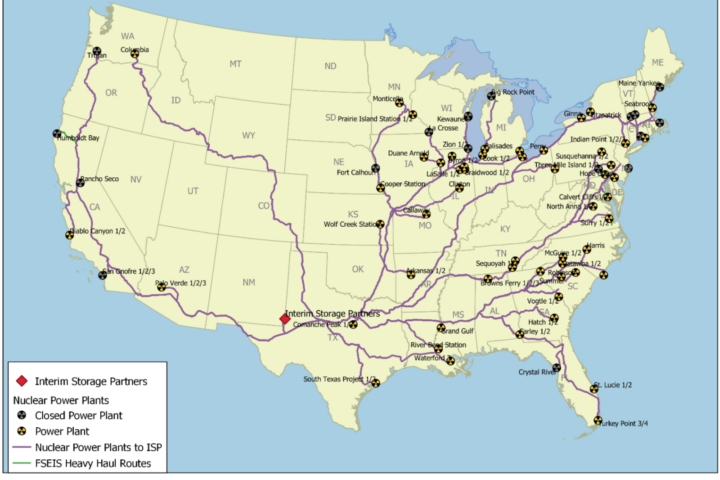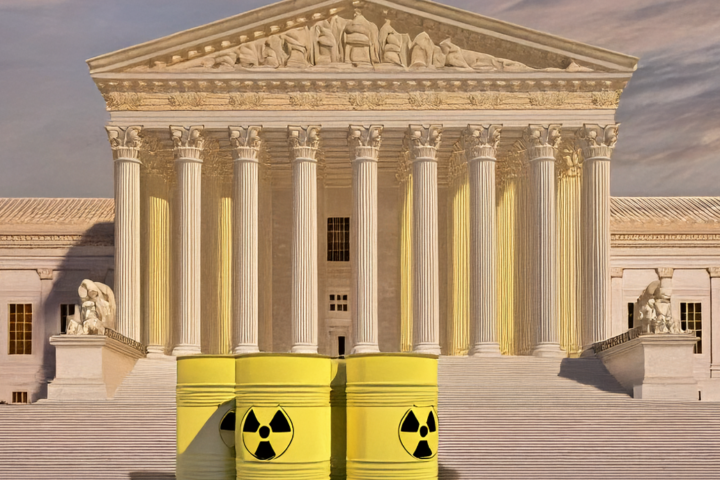Cost of Nuclear Weapons Upgrades and Improvements Increases to $1.2 Trillion
Today, in Washington, DC, the Congressional Budget Office released its new report Approaches for Managing the Costs of U.S. Nuclear Forces, 2017 to 2046, which it summarized as:
The Congressional Budget Office estimates that the most recent detailed plans for nuclear forces, which were incorporated in the Obama Administration’s 2017 budget request, would cost $1.2 trillion in 2017 dollars over the 2017–2046 period: more than $800 billion to operate and sustain (that is, incrementally upgrade) nuclear forces and about $400 billion to modernize them.
That planned nuclear modernization would boost the total costs of nuclear forces over 30 years by roughly 50 percent over what they would be to only operate and sustain fielded forces, CBO estimates. During the peak years of modernization, annual costs of nuclear forces would be roughly double the current amount. That increase would occur at a time when total defense spending may be constrained by long-term fiscal pressures, and nuclear forces would have to compete with other defense priorities for funding.
To put this in perspective, the Congressional Research Service has estimated the total post-9.11 costs of the “Global War on Terrorism” at $1 trillion and all of World War II at $4 trillion. It is also roughly the same amount that the Trump Administration is beginning to push for in questionable missile defense technologies and tax cuts for the already rich, adding to uncertainties how the average American taxpayer can afford it.
Expanded U.S. nuclear capabilities under the rubric of “modernization” include:
- The wholesale rebuilding of the Department of Energy’s production complex for nuclear weapons, with new and/or upgraded manufacturing plants for nonnuclear, plutonium and highly enriched uranium components expected to be operational until ~2080;
- A perpetual cycle of exorbitant Life Extension Programs that refurbish existing nuclear warheads while giving them new military capabilities (see, for example, https://thebulletin.org/how-us-nuclear-force-modernization-undermining-strategic-stability-burst-height-compensating-super10578); and
- Completely new intercontinental ballistic missiles, destabilizing cruise missiles, heavy bombers and submarines to deliver the rebuilt nuclear weapons.
Driving this astronomical expense is the fact that instead of maintaining just the few hundred warheads needed for the publicly claimed policy of “deterrence,” thousands of warheads are being refurbished and improved to fight a potential nuclear war. This is the little known but explicit policy of the U.S. government. As a top-level 2013 Defense Department policy document put it, “The new guidance [in Obama’s 2010 Nuclear Posture Review] requires the United States to maintain significant counterforce capabilities against potential adversaries. The new guidance does not rely on a “counter-value’ or “minimum deterrence” strategy.”
A new Nuclear Posture Review under President Trump is currently scheduled for release in Spring 2018. Among other things, it is expected to overturn the 2010 Nuclear Posture Review’s prohibition against new-design nuclear weapons, possibly promoting more usable “mini-nukes”, and to shorten the lead-time necessary to resume full-scale nuclear weapons testing.
Nuclear weapons “modernization” is a Trojan horse for the indefinite preservation and improvement of the US nuclear weapons arsenal, contrary to the 1970 Nuclear NonProliferation Treaty and the nuclear weapons ban treaty passed this last June by 122 nations at the United Nations (for which the International Campaign to Abolish Nuclear Weapons was awarded the Nobel Peace Prize). Contrary to those treaties, all eight existing nuclear weapons powers are modernizing their nuclear stockpiles, while the newest ninth power North Korea is engaged in heated, bellicose rhetoric with President Trump. But clearly the astronomical expense of US nuclear weapons modernization is not needed to deal with North Korea.
Ironically, “modernization” may actually undermine national security because the nuclear weapons labs (Los Alamos, Livermore and Sandia) are pushing radically new weapons designs that can’t be full-scale tested, or, alternatively, if they were to be tested would have severe international proliferation consequences. The most prudent way to maintain stockpile safety and reliability would be to hew to the extensively tested pedigree of the existing stockpile while performing rigorous surveillance and well proven methods of maintenance, including the routine exchange of limited life components. As a 1993 Stockpile Life Study by the Sandia Labs concluded:
It is clear that, although nuclear weapons age, they do not wear out; they last as long as the nuclear weapons community (DOE and DOD) desires. In fact, we can find no example of a nuclear weapons retirement where age was ever a major factor in the retirement decision. (Parenthesis in the original.)
While the 1993 Sandia Stockpile Life Study is obviously dated, it is still relevant because no new-design nuclear weapons have been manufactured since then (which may soon change). Further, the findings of that study have since been bolstered by subsequent expert independent studies (see, for example, https://nukewatch.org/facts/nwd/JASON_ReportPuAging.pdf and https://fas.org/irp/agency/dod/jason/lep.pdf).
Nevertheless, under nuclear weapons “modernization” the labs are pushing so-called Interoperable Warheads for both land and sub-launched ballistic missiles that will combine elements of three different warheads into a new untested design. The Los Alamos Lab is now tooling up to produce new plutonium pits for those warheads, which will not be exact replicas, thus introducing uncertainties into performance reliability. To compound the irony, the US Navy doesn’t even want the Interoperable Warhead (see https://nukewatch.org/importantdocs/resources/Navy-Memo-W87W88.pdf and http://seapowermagazine.org/stories/20170525-IW.html).
Jay Coghlan, NukeWatch Director, commented, “The American public is being sold a bill of goods in so-called nuclear weapons modernization, which will fleece the taxpayer, enrich the usual giant defense contractors, and ultimately degrade national security. Inevitably this won’t be the last major price increase, when the taxpayer’s money could be better invested in universal health care, natural disaster recovery, and cleanup of the Cold War legacy wastes. Nuclear weapons programs should be cut while relying on proven methods to maintain our stockpile as we work toward a future world free of nuclear weapons. That is what would bring us real security.”
# # #
Estimated Costs of US Nuclear Weapons for the next 30 years
The Congressional Budget Office’s report Approaches for Managing the Costs of U.S. Nuclear Forces, 2017 to 2046, October 2017, is available at https://www.cbo.gov/publication/53211
For the Congressional Research Service’s estimated war costs see Costs of Major US Wars, June 2010, https://fas.org/sgp/crs/natsec/RS22926.pdf
The quote on top-level counterforce nuclear weapons doctrine is from
Report on Nuclear Implementation Strategy of the United States Specified in Section 491 of 10. U.S.C.
Department of Defense, June 2013, page 4 (quotation marks in the original)http://www.globalsecurity.org/wmd/library/policy/dod/us-nuclear-employment-strategy.pdf
The 1993 Sandia Stockpile Life Study is available at https://nukewatch.org/facts/nwd/Sandia_93_StockpileLife.pdf


